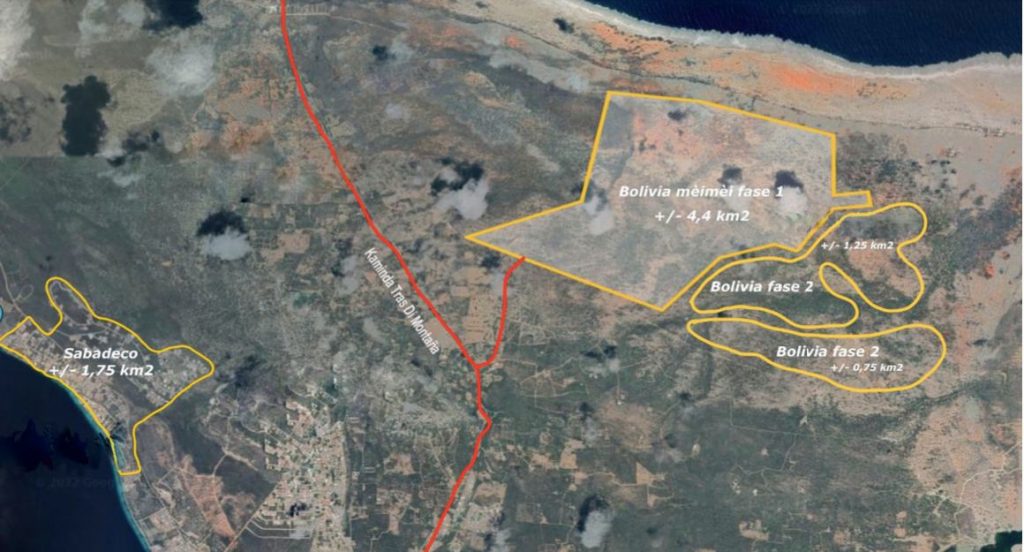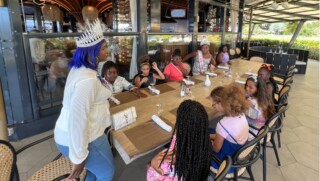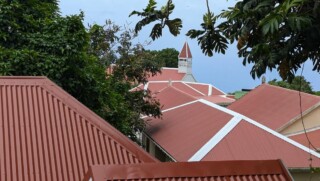Letter to the editor by Foundation Save Plantation Bolivia

Written by Foundation Save Plantation Bolivia, Wilma Nijland.
Recently we were able to take note of the ‘Woningbouwonderzoek Bonaire – Plantage Bolivia’, written by ‘Bureau Stedelijke Planning’ (Bureau Urban Planning) located in Amsterdam and Gouda on behalf of Bonaire Properties BV (BP, read: the Breemhaar couple). The report dates from September 2021 and was only recently provided to R&O for the purpose of drawing up the new spatial development plan.
We are sending you this letter because after reading the report, it initially gives a solid and credible impression, but closer examination reveals a clear change of course compared to previous plans with serious social and infrastructural consequences.
In this letter we draw attention to this change of course and its consequences to contribute to a balanced opinion formation.
The change of course relates to two things: social housing and the size of the area to be developed.
Firstly, social housing has completely disappeared from the plans. This has been replaced by a plan to have a maximum of a quarter of the housing stock consist of homes for middle incomes and the rest of homes from $400,000 to more than a million. For the image we have to think of a neighborhood like Sabadeco, but in terms of surface area more than three times larger.
A painful observation is that the choice to abandon housing for the lowest incomes has given way to profit maximization. This is made clear by a short sentence stating not to offer too many lots at the same time ’to optimize pricing’.
Second, the report shows that the previous commitment to develop only 10% of plantation Bolivia has disappeared. The report states that BP plans to develop a total of around 700 hectares for housing, agricultural activities, eco-resorts, etc. So, 25% is being developed.
The authors further note that an important condition for the successful development of the area is the presence of roads. The construction of the roads between the many dozens of housing clusters and the access to the public road will entail enormous ecological disturbance. Dozens of bulldozers and many hundreds of flatbed trailers carrying thousands of tons of diabase will enter the area to provide passable roads.
But also outside the plantation a serious issue arises with regard to the infrastructure. The compilers of the report also disregard this issue, but the current and future administrators of Bonaire are confronted with enormous infrastructural issues due to the development of ’the third residential core’. The residents will use the facilities in Kralendijk, such as schools, shops, restaurants, and the hospital. The opening up of the area is foreseen at Bolivia mei-mei, opposite the road to Seru Largu. As a result, road use by motorized transport will increase enormously to Kralendijk, but the infrastructure is a concern for the executive council (BC) who is responsible for it and the developer is not concerned about that.
Nature restoration, landscape and agriculture are included in the report. The report states that the returns from the development can be used for nature restoration, landscape and agriculture. Pay particular attention to the word ‘can’ here. In our view, this suggestion belongs to the category of wishful thinking, the same category in which social housing has disappeared.
Moreover, there is something else going on with regard to nature management and restoration. The report shows where housing is planned: roughly in a 2.5-kilometer-wide strip from the southwest to the northeast with a length of 5.5 kilometers, exactly in the middle part of plantation Bolivia. All research reports that have appeared on Bolivia in recent decades (including Carmabi and WUR) mention the importance of the plantation as a corridor between the northwestern and the southern part of the island. The proposal from the Urban Planning Bureau does not take this into account at all. The flora and fauna corridor is completely lost.
Matters that have less, or no social consequences relate to matters such as water extraction, purification and energy. These are not matters that you have to worry about immediately, but they do make it clear that the writers are insufficiently aware of specific circumstances that apply on Bonaire.
The writers think, for example, that the water requirement can be met by collecting rainwater. This is sheer nonsense. People who use water economically use 100 liters per day. With an average occupancy of 2.08 people per home and the 950 homes in the first phase, nearly 200 thousand liters of water are needed every day. With an average annual rainfall of 500 mm on Bonaire, it is impossible to meet the water needs of the households through rainwater.
The authors also mention water purification. We are curious what it will look like. We expect that the processing of wastewater will take place through septic tanks. The comment about the water purification in the area is a blank slate that makes it clear that the writers are not sufficiently familiar with the island and its possibilities and limitations.
In their view, the energy supply is not a real issue either. Energy is obtained from sun and wind. Whether this means that each individual resident will be responsible for this or that central facilities will be provided is not reported.
The assumption that the development of the project will contribute to the economic growth of the island also belongs to the category of wishful thinking. The maximized profits of the owners and project developers will most likely disappear into foreign bank accounts, most real estate agents who will mediate in the sale of the plots and homes are not of Bonairean descent, the contractors are most likely from European and American origin, the builders mostly come from South American countries and the later residents probably do their shopping in supermarkets and eat out in restaurants that are not owned by Bonairean owners. All profits made at the different levels are most likely going to disappear into foreign bank accounts.
Finally, no attention has been paid to support for the project development. The writers have spoken with three real estate agents. Their view is not free from interests. After all, they have every interest in the area being parceled out and built on, because they also see the possibilities for maximizing profit. It’s great that we know how the brokers view the development, it’s a shame the compilers have not heard potential future residents. Are there even people who want to live in Bolivia? Close to the inaccessible sea on the north-north/east coast, full of wind, which regularly passes at 40 km per hour, with all the consequences for maintenance, in a ‘landscape park’ with 1,900! houses and teeming with goats, who eat to the roots every new tree planted as promised to replace a lost one.
Finish
As a result of the letter of intent concluded between the BC and BP, Executive Den Heyer noted that it is important that, in addition to the protection of nature and economic development, ’there is also attention for the shortage of affordable owner-occupied and rental housing for our residents’ and that this is ‘fortunately included in the plan’.
As can be read, it no longer concerns affordable housing for our residents, a much larger part is developed than previously promised, the attention for nature is left to a voluntary investment and the owner focuses mainly or perhaps completely on the top end of the market. The planned development will destroy the ecological corridor north-south and Bonaire will lose an important dry tropical forest (3,000 ha).
We believe that the document describing all this should be made public so that everyone can read it and form an opinion about it.












